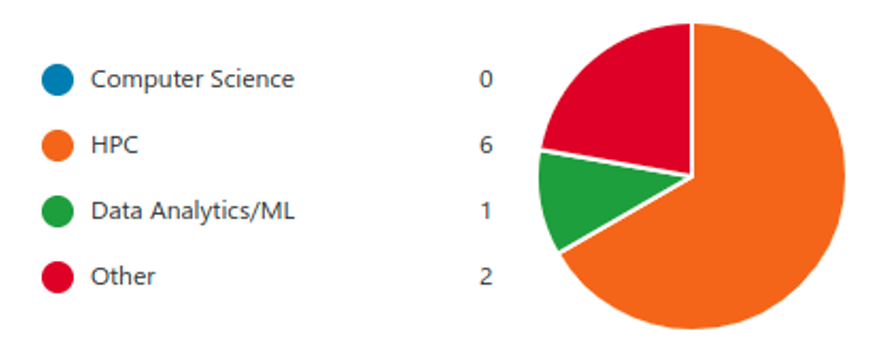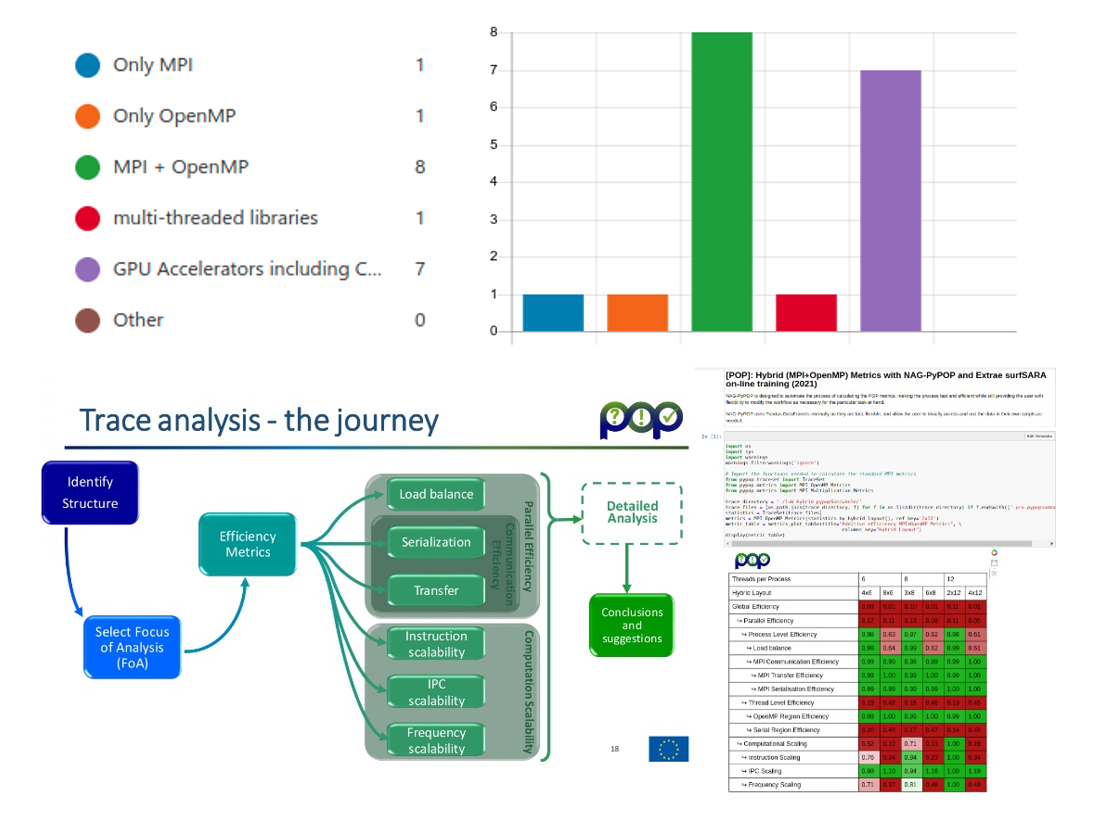Jonathan Boyle and Federico Panichi from POP partner NAG (Numerical Algorithms Group) recently provided a one-day online training to the users and HPC support team of SURF (formerly SURFsara) (https://userinfo.surfsara.nl/). Part of a long-standing collaboration between POP and SURF, the online training was structured around the interests of the participants and tailored to their own machine (Cartesius - https://userinfo.surfsara.nl/systems/cartesius).
Divided into theoretical and practical sessions, the training day provided the attendees with an extensive introduction to profiling parallel codes on HPC machines, the POP profiling methodology and tools, and a review of real cases where POP services have been used to improve the performance of parallel codes (https://pop-coe.eu/target-customers/success-stories). The course focused on the Extrae and Paraver profiling tools from BSC, along with the NAG python package, NAG-PyPOP. These tools were used by the attendees during the practical session to perform a POP-like assessment on the NASA parallel benchmarks test-cases (NPB-3.4 - https://www.nas.nasa.gov/publications/npb.html). They were shown how to generate the trace files, inspect them and obtain the POP metrics in a straightforward way for MPI, OpenMP and hybrid test-cases. The approach demonstrated during this training can now be used by the attendees to independently apply the POP methodology to their own parallel application codes.
By inspecting the attendees' statistics, collected after the online training, we observed that the majority (67%) of the participants are working for or collaborating with HPC centres and that the parallel programming paradigms most used are hybrid (OpenMP + MPI) and GPU accelerators. Additionally, the participants use multiple programming languages for their applications: Fortran, C/C++ and Python were the most used, without a clear preference for one over the others.

Figure 1: 67% of all attendees that answered the survey are connected to HPC centres (orange), the remaining 33% are divided between Data Analytics/ML and other domains of research.

Figure 2: More than 80% of attendees have their application written, or plan to write it, using a hybrid approach or GPU accelerators (top panel). The workflow for tracing an application is shown in the bottom left panel, together with a NAG-PyPOP notebook obtained during the hands-on session (Bottom right panel).
The training day received very positive feedback from the attendees, with more than 80% of them feeling that they had benefitted from the course and more than 70% considering the quality of the material, presentations and hands-on session to be very good or excellent. Carlos Teijeiro Barjas (Advisor Supercomputing at SURF), who both participated in and helped organise the training day, said
“I really appreciate the dedication and effort that NAG spent to prepare and deliver this well-organized online training and the set-up. I appreciated a lot that the online training has been tailored to our own system.”
With sixteen attendees, the training was a great collaboration between POP and the wider HPC community. As one of the attendees observed,
“… it went great, and I would suggest you have this as a regular training. More HPC centres would be interested, I'm sure.”
